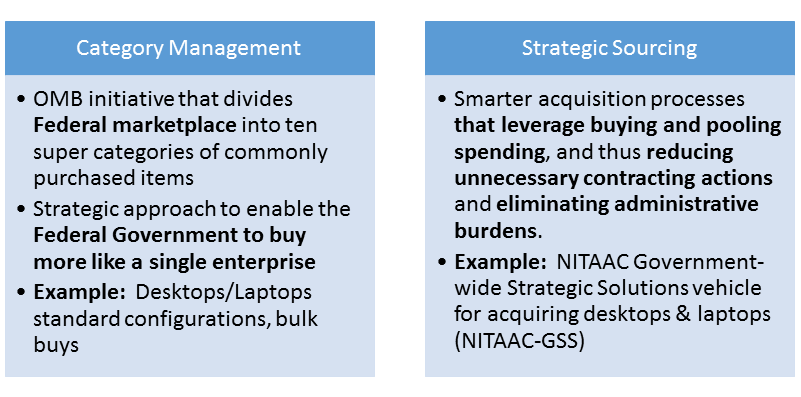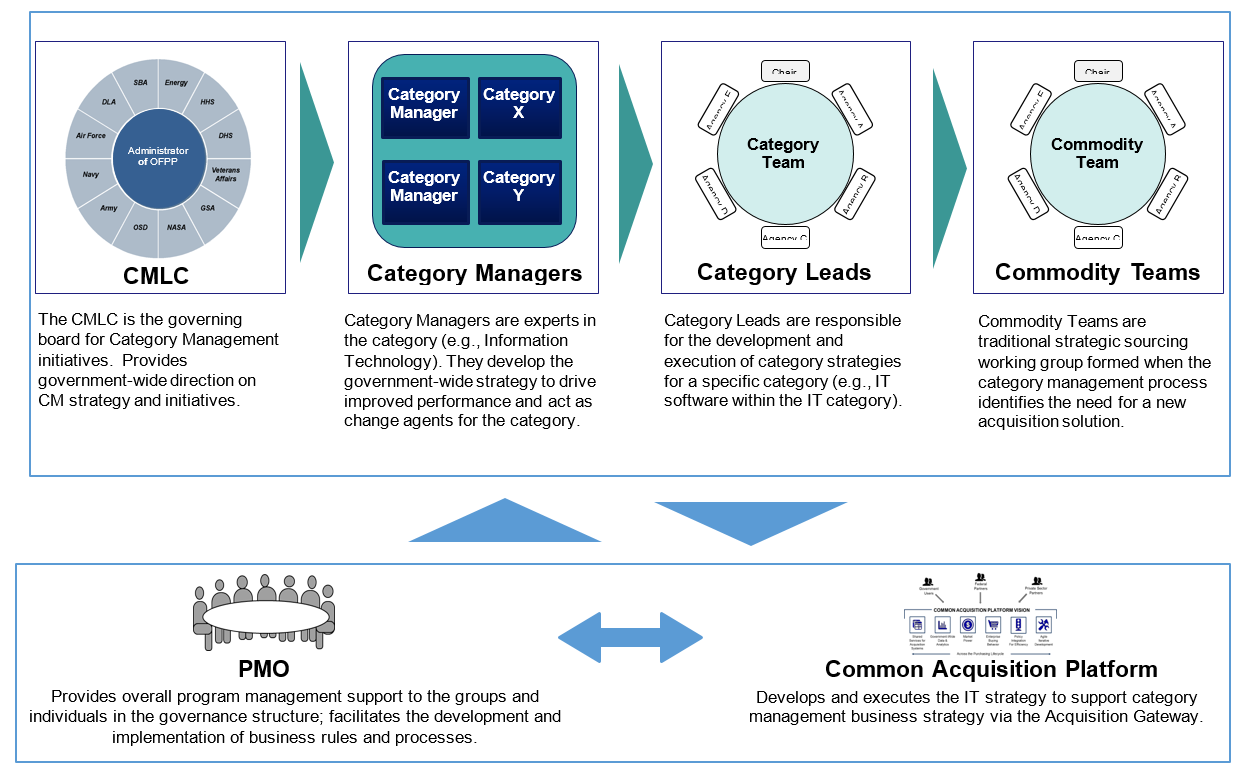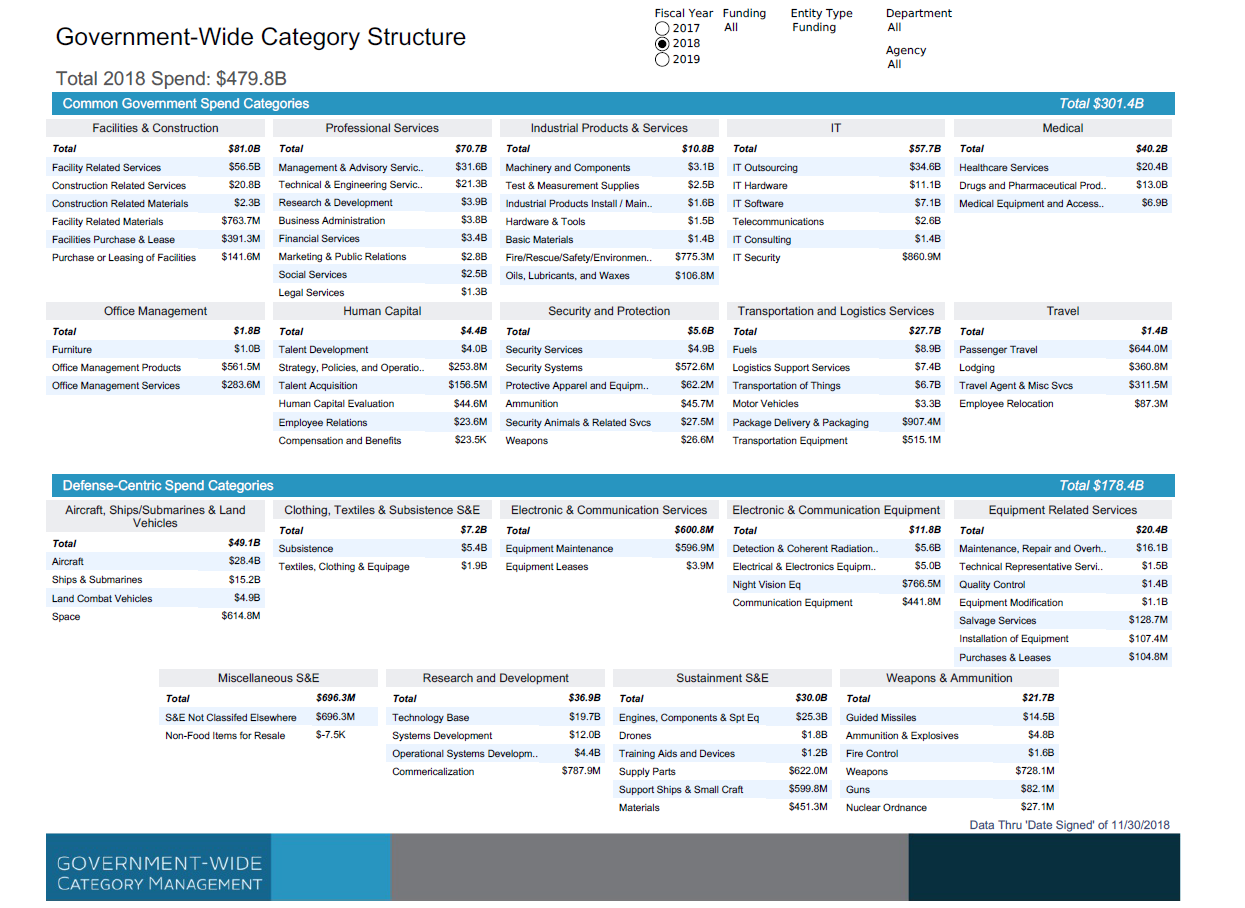CATEGORY MANAGEMENT AND STRATEGIC SOURCING
Category Management is a strategy wherein the array of products and services purchased by an organization is strategically managed in groups of similar or related products and services. Strategic Sourcing is the collaborative and structured process of critically analyzing an organization’s spending and using this information to make business decisions about acquiring commodities and services more effectively and efficiently.
Our Mission
The Category Management, Strategic Sourcing, and Data Analysis (CMSSDA) branch’s mission is to represent the NIH’s interests on the Category Management Leadership Council (CMLC) and common government spend working groups. By encouraging the utilization of government wide contract solutions, CMSSDA advocates for smarter leveraged buying. CMSSDA empowers the NIH community to eliminate redundancies, increase efficiency, deliver value, and realize savings by buying as part of a larger single US government enterprise. In the rare instances when buying as part of a single enterprise is not possible, CMSSDA will encourage consolidation at either the departmental (HHS) or operating division (NIH) level.

How does the Category Management process work?
The Office of Management and Budget (OMB) has tasked the Category Management Leadership Council (CMLC) with implementing Category Management on a Government-wide level. The process flow is outlined in the diagram below.

What are the ten super categories of the Category Management Initiative?
The following diagram outlines the Government categories and their share of the FY 2014 Government spend in billions. Please note that the Defense-Centric Categories are not currently included in the CMLC effort.
Please visit the Government-Wide Category Structure by clicking here

